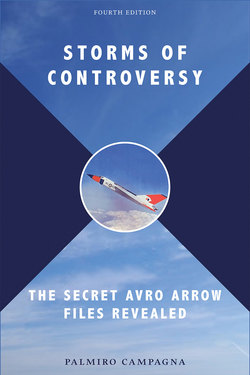Storms of Controversy

Реклама. ООО «ЛитРес», ИНН: 7719571260.
Оглавление
Palmiro Campagna. Storms of Controversy
Отрывок из книги
STORMS OF CONTROVERSY
STORMS OF CONTROVERSY
.....
The minister went on to outline that the Treasury Board had authorized an expenditure of $200,000 on May 8, 1953, and an additional $300,000 on July 21. These monies had been spent on design studies and wind-tunnel testing. He stressed that if the program were begun in earnest, a prototype could be completed by October 1956, with production by 1959. He then sought approval for the development to commence. Expenditures would be $26,925,000 spread over a period extending into 1958 and would include some $4 million in government-supplied equipment. Engines would be the most suitable ones found in either the United States or Britain. Two prototype aircraft would be built. Claxton was successful, and Avro was awarded a design-and-development contract in March 1954; the CF-105 design began in May of that year.
The RCAF specifications, which no foreign aircraft could meet, included a supersonic combat radius of 200 nautical miles, a combat ceiling of not less than 60,000 feet, a maximum speed at altitude of Mach 2, a rate of climb not more than six minutes to 50,000 feet, twin engines, a crew capacity of two, an all-weather capability, and a manoeuvrability of 2 g at Mach 1.5 at 50,000 feet without loss of speed or altitude. Also, the aircraft had to provide as much flexibility as possible for engines and armament capacity due to the uncertain availability of those under consideration. In the words of Claxton, the requirements had been developed by the RCAF “in conjunction with the DRB, the NAE, the United States Air Force, Department of Defence Production and various aircraft manufacturers both in the United States and the United Kingdom.”16 He had every confidence that Avro would be equal to the task.
.....